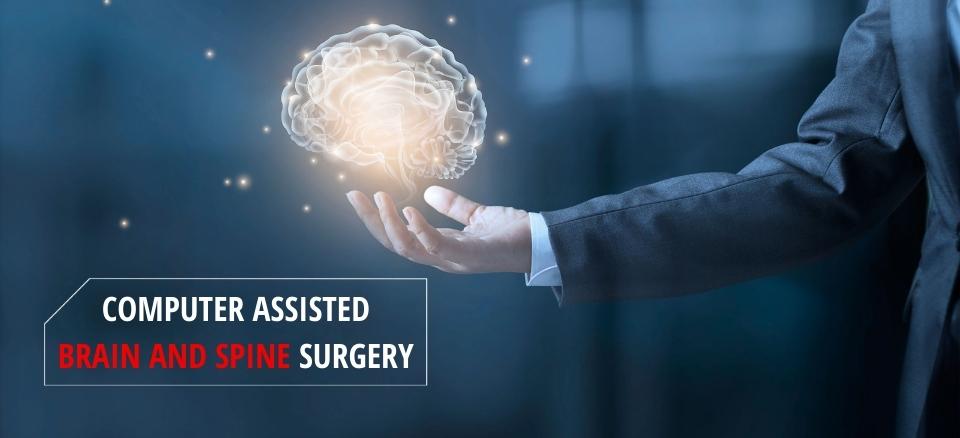Navigation technology in neurosurgeries is the best example of today’s technological capabilities being applied to medicine. Over the past decade, navigation technology has seen an upward shift.
Neurosurgeries are among the most challenging procedures undertaken on the human body. Considering the delicate nature of these surgeries, a wide variety of electro-mechanical tools have evolved in recent years.
Navigation technology is used in Brain and Spine Surgery as a measurement tool and information center to provide surgeons with the right information at the right time. This technology helps a neurosurgeon answer several questions, including:
-
Where is the [anatomical] target?
-
How to reach the target safely?
-
How to position the implant?
Additionally, navigation is quickly becoming an integral part of the surgical routine. The reason for this is improved technology and the trend towards advanced information processing among hospitals.
In recent years, this technology has changed the outlook towards Brain and Spine Surgery. It has spurred technical progress, enabling surgeons to perform more daring procedures with ease and efficiency.
Role of navigation technology – Game changer in various neuro and spine surgery
Neuro-navigation requires real-time intraoperative guidance during brain or spinal surgery. This technology has become an essential tool in the field of neurosurgery.
It guides the surgeons to the surgical targets without using additional frames. The stereotactic aspect of this technology is based on external or surface fiducials and internal or anatomical landmarks.
How does neuronavigation work?
Patient medical data [CT/MRI] is fed into the computer system. Then during surgery, standard landmarks on the patient are fed into the computer and precise matching is done. Using various navigation tools, the surgeons exactly know how they are anatomically placed in the patient in relation to the target.
To achieve this goal, a neuronavigation system has been developed to provide precise spatial information to neurosurgeons. The central clinical role played by navigation technology in modern surgery includes:
- Localization of small intracranial lesions
- Skull-base surgery
- Intra-cerebral biopsy
- Functional neurosurgery
- Spine navigation
To perform all these surgeries, neurosurgeons use computer-assisted techniques. These techniques help to easily navigate within the confines of the skull or vertebral column during surgery. Navigation technology allows doctors to receive all the information at a glance. They can precisely track instrument positions and then project them onto the preoperative imaging data. Therefore, this technology is being applied in various neuro and spine surgeries.
Stereotactic surgeries
Stereotactic surgery is a minimally invasive form of surgical intervention which uses a three-dimensional coordinate system to locate small targets inside the body. This surgery is used to treat various brain abnormalities and small tumors.
How does it work?
Neuronavigation has been recognized as an evolutionary step in performing stereotactic surgeries. Stereotactic navigation works exactly like a car’s GPS to help you navigate. It provides 3-D navigation during neurosurgery using two cameras positioned about six feet apart.
The cameras have infrared sensors to determine the location of the tip of the probe that is being used in the surgical procedure. Then, rapid trigonometry measures the angles, and the information is sent in real-time to the surgeons.
In this way, they can have a clear image of the precise location of where they are working within the body.
In Brain and Spine Surgery, this technology is quickly becoming popular for the accurate placement of spinal instrumentation in the verification of anatomic landmarks. In cervical spine surgery, this tool helps verify anatomic locations, particularly when anatomy comes close to neurovascular structure.
Brain biopsy
The need for reliable means of accessing deep brain lesions with high accuracy has been fulfilled by navigation technology. Neuronavigational frameless systems have been increasingly adopted for brain biopsy. The frameless system provides comparable accuracy in collecting diagnostic tissues for eloquent and non-eloquent regions of the brain. It can provide additional reassurance to the surgeon about the brain biopsy.
Brain tumor resection
Despite great advancements in brain tumor surgeries, a precise intraoperative location and removal of neoplasmatic tissue remain difficult in many patients. For those reasons, different navigation systems have been developed. Frameless stereotactic neuronavigation has become a necessary tool in planning a surgical approach for brain tumor resection.
This technique is good to use in the skull base tumors for planning an operative trajectory in regions containing vital neurovascular structures. In this way, it is easier for neurosurgeons to perform complex surgeries like brain tumor surgeries.
Pituitary surgery
This surgery is considered an ideal way to remove pituitary tumors. It can be done to remove the tumor from the upper part of your skull via an incision. The advantage of using neuronavigation in pituitary surgery includes, improvement in safety, decrease in the duration of the surgery. Especially helpful in Redo surgery where normal landmarks are lost.
Spinal surgery
The spine is much more flexible so the skin markers are not applicable in that case. The Brain and Spine Surgery is performed either with a paired-point technique or in combination with surface matching. The computer-aided navigation system helps in the right insertion of screws in the thoracolumbar region.
Conclusion
In the future, neuronavigation will evolve to incorporate more hi-tech imaging techniques and surgical tools. This technology is no less than a boon for patients with various conditions ranging from epilepsy to brain tumors to movement disorders. Top neurosurgeons at Amandeep Group of Hospitals handle all the neuronavigation-assisted surgeries with complete care and effectiveness.
Amandeep Group of Hospitals: Consult the Best Neuro Specialists
At Amandeep Group of Hospitals, we work towards providing the most effective surgical procedures. Our neurosurgeons use the latest techniques in treating various neurological disorders. In addition, we have years of expertise in handling complex neurological surgeries.
Visit us in the hour of need and consult our best neuro specialists.




